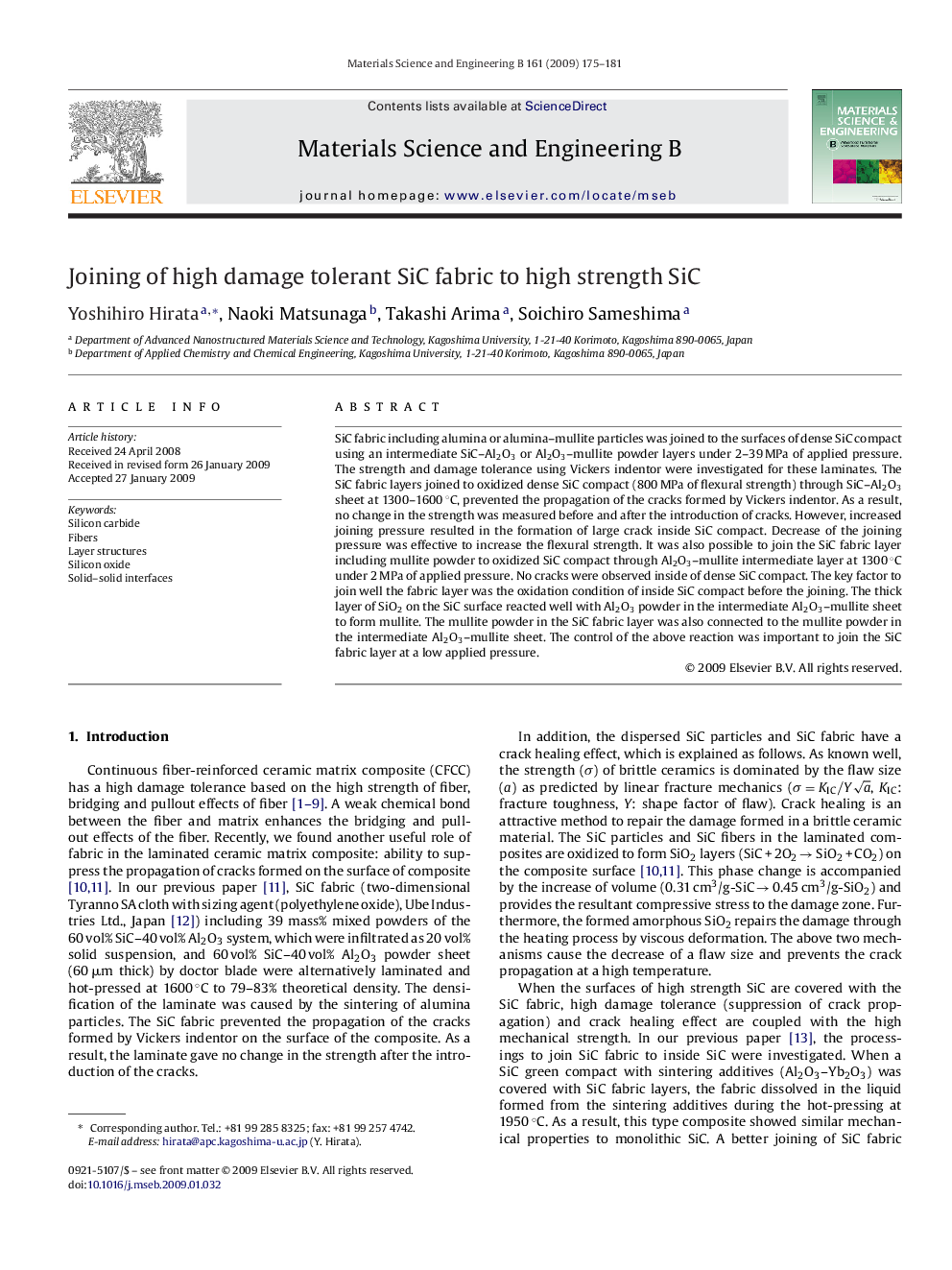| Article ID | Journal | Published Year | Pages | File Type |
|---|---|---|---|---|
| 1530830 | Materials Science and Engineering: B | 2009 | 7 Pages |
SiC fabric including alumina or alumina–mullite particles was joined to the surfaces of dense SiC compact using an intermediate SiC–Al2O3 or Al2O3–mullite powder layers under 2–39 MPa of applied pressure. The strength and damage tolerance using Vickers indentor were investigated for these laminates. The SiC fabric layers joined to oxidized dense SiC compact (800 MPa of flexural strength) through SiC–Al2O3 sheet at 1300–1600 °C, prevented the propagation of the cracks formed by Vickers indentor. As a result, no change in the strength was measured before and after the introduction of cracks. However, increased joining pressure resulted in the formation of large crack inside SiC compact. Decrease of the joining pressure was effective to increase the flexural strength. It was also possible to join the SiC fabric layer including mullite powder to oxidized SiC compact through Al2O3–mullite intermediate layer at 1300 °C under 2 MPa of applied pressure. No cracks were observed inside of dense SiC compact. The key factor to join well the fabric layer was the oxidation condition of inside SiC compact before the joining. The thick layer of SiO2 on the SiC surface reacted well with Al2O3 powder in the intermediate Al2O3–mullite sheet to form mullite. The mullite powder in the SiC fabric layer was also connected to the mullite powder in the intermediate Al2O3–mullite sheet. The control of the above reaction was important to join the SiC fabric layer at a low applied pressure.
